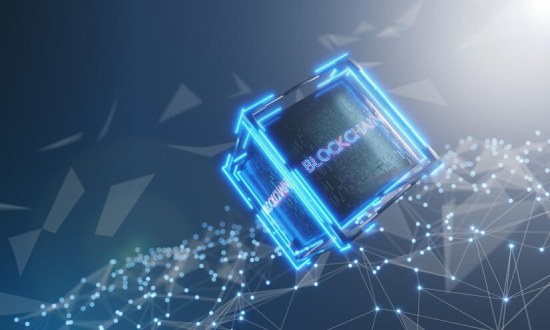-
ERC, the acronym for Ethereum Request for Comments, refers to Ethereum application-level specifications, such as token standards, name registries, library/package formats, and more. However, developing an ERC token with Ethereum Blockchain app development requires mentioning the standard and gaining community approval. ERC standards specify a collection of functions for a token form, allowing applications and smart contracts to communicate with it predictably.
Moreover, ERC-20 is one of the most popular ERC standards to date. It is a form of a standard that simplifies the development, use, and exchange of Ethereum-based tokens. On the other hand, crypto enthusiasts must address issues while implementing restricted functionality from each standard by various projects. This results in smart contracts that must comply with the ERC standard, a problem we address in the guide's final segment.
For the time being, let's concentrate on various ERC standards. ERC tokens are digital tokens operating on the Ethereum blockchain, following a set of ERC standards. They come in multiple shapes and sizes and have become famous for their ability to represent cryptocurrencies, digital art, collectibles, and more on the Ethereum network.
Ethereum ERC Token Standards | Types and Applications
ERC-20 is One of the Well-known Ethereum ERC Token Standards
The ERC-20 standard has been the most important one for Ethereum since 2015. ERC-20 has emerged as the technological standard for token implementation on the Ethereum blockchain. Developers use it for all smart contracts on the Ethereum blockchain. It lays out various adherence guidelines for all Ethereum-based tokens. ERC-20 tokens are digital assets users can transfer and receive on the Ethereum blockchain. The main difference is that ERC-20 tokens are distributed on the Ethereum network rather than on their blockchain.
The issuance of numerous ERC-20 tokens to raise funds for new Blockchain ventures fueled the Blockchain buzz in 2017 and 2018. However, in 2020, this standard will still be in use and significant for the Blockchain and Ethereum ecosystems. Crypto exchanges and other service providers have also endorsed it.
Also, Check | Understanding ERC-404 | The Unofficial Token Standard
ERC-721 and ERC-1155 are Non-Fungible Tokens (NFT) Specifications
Non-fungible Tokens (NFTs) are well-known in the collectible and gaming industries. They are one of the most hyped markets in the blockchain and crypto industries. NFTs have applications that go way beyond games and collectibles. Developers worldwide use ERC-721 and ERC-1155 smart contracts to build virtual worlds. But we are still in the early stages of mass adoption. Furthermore, various industries like art, music, fashion, and IoT use NFTs.
People use the ERC-721 standard for tokenizing unique individual objects and properties in collectibles and crypto games. It has basic features for transferring and tracking NFT ownership.
The ERC1155 multi-token standard is used widely in the gaming industry and allows for managing fungible, semi-fungible, and non-fungible tokens. This standard benefits games with unique, fungible elements (like life/energy) and non-fungible elements (like weapons and other collectibles).
Also Read | ERC-20 vs BRC-20 Token | A Comparative Analysis
ERC-725 is a Digital Identity Standard
Fabian Vogelsteller, the developer of the well-known ERC-20 standard, has proposed the ERC-725 standard for Blockchain-based identity. One can manage multiple keys and smart contracts with ERC-725, which defines proxy smart contracts. Identity smart contracts can define machines, objects, groups, and individuals.
Why is it so necessary to have a sense of self-sovereign identity? Instead of handing over control of their digital identity to centralized organizations, users should be able to own and maintain it. Recently, we've seen the dangers and drawbacks of a centralized identity with data breaches and the illegal sale of user data.
A portable, open identity standard enables decentralized governance and reputation. Everyone should be able to access their identity through multiple apps and platforms.
Explore | ERC-1155 | An Introduction to Multi-Token Standard
ERC-223 is a Standard Established by the European Research
Although this isn't a widely accepted digital token standard, it can fix some UX issues with ERC token specifications. Many people have sent coins to the incorrect wallet address or, even worse, to a smart contract, losing the coins forever. Several cynical developers could blame the end-users for sending tokens to the wrong address, which could restrict public acceptance. These unfriendly interface features can turn off non-technical people.
The proposed ERC-223 notifies users to send tokens to a smart contract address by mistake and cancel the transaction. Users have to pay for gas but save their ETH. Amigocoin is one of the few projects that use the ERC-223 protocol right now. It proposes user-friendly UX features that protect users from fund failure, is backward compatible with the ERC-20 token standard, and costs half as much to run as Ethereum.Suggested Read | ERC-20 Token Standard | Things You Must Know
ERC-777 is an Ethereum-Based Cryptocurrency
The ERC-777 digital token suggests other ways to boost blockchain usability. This digital token extends the common ERC-20 token standard with many new features. One of the most important is the ability to mint or burn tokens.
More than any other, this ERC token form has the potential to make token transfers much more accessible.Read | ERC-4337: Ethereum’s Account Abstraction Proposal
ERC-1400 and ERC-1404 are Security Token SpecificationsDevelopers create the ERC-1400 specification explicitly for Security Tokens, which are actual securities representing any real-world asset on the blockchain.
The standard makes restricted transfers, the addition of transfer material, document library management, and forced transfers possible. You can accomplish this by integrating several ERC specifications. Each specification addresses a different element of the required Security Token functionality.
As a result, it has a wide range of features that allow for the legal deployment of Security Tokens. The ERC-1404 standard is an extension of the ERC-20 standard. It allows the issuance of security tokens with transfer restrictions to comply with regulatory requirements. It enables the development of a whitelist, for example.
As a result, the issuer can choose who can buy and own the token. Token owners (investors) must complete an onboarding process that includes a KYC and AML search. Reversing a token also enables the usage of human-readable messages.
Check Out | Understanding ERC-404 | The Unofficial Token Standard
Final Thoughts
As new Ethereum ERC token standards evolve, each will introduce new features and bug fixes for existing tokens. To ensure that your blockchain platform provides the most value to end-users, you must first decide which digital token to use. Having the tokenomics right is a critical step in initiating a successful project. Connect with our blockchain development experts for a thorough discussion if you have a similar project in mind.

Our Offices
INDIA
Emaar Digital Greens, Sector 61,
Gurugram, Haryana
122011.
Welldone Tech Park,
Sector 48, Sohna road,
Gurugram, Haryana
122018.














